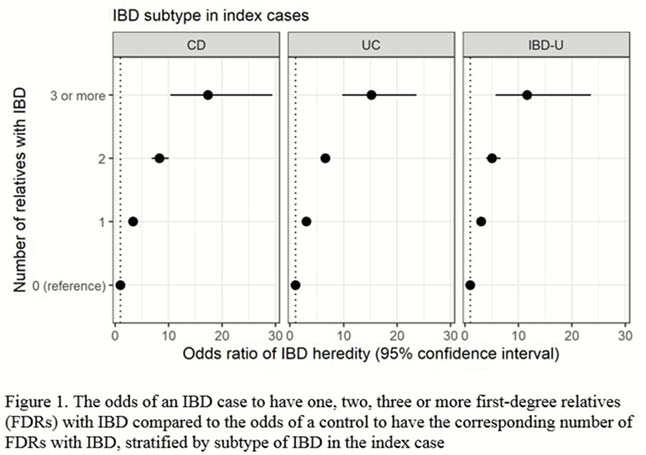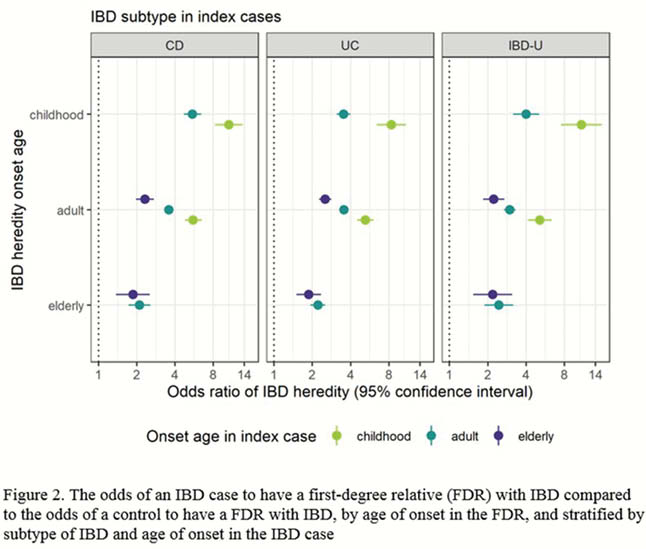P740 Age determines the risk of familial IBD: A nationwide case–control study
J. Halfvarson1, J. Ludvigsson2, M. Sachs3, J. Askling3, O. Olén3
1Department of Gastroenterology- Faculty of Medicine and Health, Örebro University, Örebro, Sweden, 2Department of Medical Epidemiology and Biostatistics, Karolinska Institutet, Stockholm, Sweden, 3Clinical Epidemiology Division- Department of Medicine Solna, Karolinska Institutet, Stockholm, Sweden
Background
A family history of inflammatory bowel disease (IBD) is a proxy for an individual’s genetic and, in part, environmental risk of developing IBD, and is one of the strongest known risk factors for developing IBD. Although a familial aggregation is a well-established concept, data on its strength and nature are sparse. Therefore, to provide precise estimates of the familial aggregation, we performed a nation-wide, case-control study and examined the relative risk for patients with IBD (vs. population controls) to have a first-degree relative (FDR) with IBD, by age of onset, type of family history, and IBD subtype.
Methods
Individuals diagnosed with IBD between 1 January 2003 and 31 December 2017 with at least one first degree relative (FDR) were identified from Swedish national registers and compared with non-IBD controls, with at least one FDR, from the general population. We used logistic regression to calculate odds ratios (ORs) as estimates of relative risk for IBD in FDRs taking age at IBD onset, sex, county, and year of IBD diagnosis into account.
Results
We identified 50,667 incident cases with IBD (CD,


Conclusion
The relative risk of familial IBD varies by IBD subtype as well as by age of onset in the index patient with IBD and the FDR, pointing to differences in genetic predisposition and environmental risks between different phenotypes of IBD.


